Zoning rules
Zoning in children's rooms is often used by designers in apartment projects, therefore there is a whole set of recommendations on how best to divide the nursery:
- Consider the number of children living in the children's room... In the room for one there is a play area, a work and a sleeping place. For two, you will need to divide the children's room into two zones and allocate personal space for each.
- Select zones in the children's room, according to age... For preschool children, there is a large playroom with a sports corner. Schoolchildren need a comfortable desk and storage space for office supplies.
- Consider interests and hobbies... For a girl who is engaged in dancing, free space with a mirror on the floor will not be superfluous; for a Lego lover, you need an assembly table and dressers for storing toys.
Don't forget the most important thing: zoning of space in a children's room should be convenient first of all for its tenant! Consider also safety - for example, so that nothing falls on the baby while sleeping from the shelf that separates the sleeping and study area in the nursery.
What areas need to be considered?
The zones in the nursery, whether it is for one child, brother and sister or twins, will be about the same. Qualitative separation of them from each other guarantees a good sound sleep and helps you focus on your studies. What are they and what are they made of?
Sleep and rest area
One way or another, a children's room is primarily a bedroom. Therefore, the place to sleep in it should be the main focus. Bed is selected based on the size of the room and the number of people living in it.
For one, a regular bed is installed or a structure is organized with a bed on the second tier and a work table under it.
Bunk bed - rescue in a small room of two children. The recreation area will not take up much space and you will be able to place other necessary furniture.
Sometimes it is appropriate to remove the bed under the podium - the sliding model is used in confined spaces, or in children's rooms for 2-4 children.
Next to the resting place, they usually install cupboard for storing things and clothes. Don't forget also a night light (for the little ones) and a bedside table to put a book or phone on.
Game Zone
A play space is required for all children up to adolescence. True, it will look different.
In the baby's room, there are racks with toys, a rug or mattress for playing on the floor, a small table and a chair for creativity. The composition can be supplemented with a pool with balls, a wigwam, a TV, a comfortable pouf or an armchair for additional comfort.
Older children have fewer toys, so less storage space is also required. But they already have personal preferences that should be taken into account: if you like dancing, you need a mirror. For gamers - a comfortable chair and a large monitor. Car enthusiasts will need a spacious garage.
In the photo there is a sports play area behind the partition
The playground is suitable for any age, especially if the child is hyperactive: wall bars, rope, rings, climbing wall will appeal to everyone. In addition, homework helps to develop the muscle corset.
Study area
The study area is required for children 5 and older. It includes a desk, a chair, pencil cases or cabinets for storing notebooks, textbooks, pens, a table lamp.
Middle and high school students are required to have a computer or laptop on which they can do their homework.
Important! It is advisable to separate the work space with a partition, creating a quiet study area in which there will be no distractions and students can concentrate on the task.
Zoning options
You can split a room into two or three parts using various tools - both physical and visual.
Furniture
This method of zoning includes the use of shelves, cabinets, sofas and other interior items.
Racks with cells are most often used. - they are open on both sides and allow you to use the shelves from any area. At the same time, due to transparency, they look less bulky than closed cabinets.
In shelves, things can be stored on open shelves, in special insert boxes, on the lid.
In the photo, the option of zoning a children's rack
Finishing
The use of different finishes helps not only to accentuate attention, but is also often used in dividing a room. For example, calm monophonic wallpapers are used near the bed, and colorful wallpapers with a bright pattern are used in the playroom. Or in one part of the nursery, you can draw a drawing on the wall.
Finishing the floor with different materials during renovation will also help create the feeling of a visually divided space. In the play area, for example, carpet or carpet is laid, and laminate or linoleum under the bed and workplace.
In the photo, an example of highlighting zones in a nursery with wallpaper
Color highlighting of zones
Manipulating the color scheme is similar to working with decoration: the zoning of the nursery will also be exclusively visual. But thanks to the correct work with color, you can not only achieve the goal of marking boundaries, but also control the mood and state of the baby.
For example, next to and in front of the bed, it is logical to decorate in light, pastel, preferably cold colors - blue, green, gray shades soothe and help to relax. Use blue, dark blue, dark green, yellow near the table for classes - these useful shades help to focus, activate the brain.
Colors suitable for games are energizing: tones of the red, yellow, orange spectrum do the best for this task.
Screens
The zoning of children's rooms with stationary partitions needs to be thought out in advance for several years in advance. Considering that the 2-year-old will soon be a schoolboy and you will have to find a place for a work area.
In order not to think over in advance the arrangement of furniture in the future, you can use folding portable screens. The only caveat is that, unlike the built-in ones, they are not fixed in any way, which means they can fall and injure the baby.
Another alternative is curtains. They are easy to install, they do not take up much space, but at the same time the fabric is an excellent partition and is suitable even for children of different sexes. In addition, the curtains do not have sharp corners and hitting them during active entertainment does not bode well.
If you do choose solid partitions - stationary or portable, do not install blank walls. It is better if there are gaps or special decorative holes in them - these look lighter, let light and air pass through, and practically do not affect the visual perception of the size of the room.
In the photo there is a sleeping area separated by a screen
By the light
Light in the zoning of the nursery is rarely used, because a quality department will require a professional approach.Lighting is used alone or as an addition to zoning with decoration, color, and other techniques.
The essence of the method consists in organizing different light sources in different functional corners of the room. That is: a night light and a reading lamp in the bedroom, bright ceiling lights in a playroom, a sconce or a table lamp in a study. To make the zoning as obvious as possible, each element should be included separately from the others.
Level zoning
The use of multi-level ceilings has long been a thing of the past, but the difference in flooring levels is still relevant today.
To independently implement such an option, you will need to build a podium and bring one of the zones onto it. Most often, a bed or desk is located on the platform.
Inside the podium, you can hide a pull-out bed - a main or additional bed. Or organize an additional storage area with drawers, in which there is always something to put in the nursery.
Important! The elevation must be suitable for age and height. 30-40 cm will not be a problem for a teenager, unlike a 2-3-year-old crumbs who can simply fall from above.
Popular examples of dividing a room
Most often, you need to divide the space when two children - in the room, you need not only to demarcate the territories, but also to allocate to each his own personal area.
Two same-sex children
The easiest way to design a room boys or girls about the same age living together. Brothers or sisters will be able to sleep on one bunk bed, do their homework at one long table, and they will also most likely play together with the same toys.
If the area of a spacious room allows, and the windows and doors are in the center, use a symmetrical layout: divide the room lengthwise into two halves and put each on a bed, a separate table, and a bedside table. And in the middle there will be a common space for entertainment.
Two children of different sexes
Unlike zoning a nursery for a boy or girl, when there are two children and they are of different sex, you will need to make two out of one room.
The symmetrical layout is also relevant in this case, while it is advisable to put a plasterboard partition or a high rack between the places for rest and study. So the children will not interfere with each other's rest and study.
Color finishing works also: for girls they choose warmer, more delicate shades (pink, orange, lilac), for boys - strict and cold (blue, green, yellow).
Advice! So that the design does not look too clumsy, choose the same furniture and type of finish (wallpaper, painting), but different colors of textiles, finishing materials, decor.
In the photo there is space for a boy and a girl
For children of different ages
If children live in a children's room with a difference of more than 2-3 years, certain difficulties may arise in its design. You will have to consider completely different pastimes. For the younger, you will need to equip the playroom, the older one must organize a closed study space so that the little brother or sister cannot interfere with learning.
It is better to divide berths, but if there is not enough free space, you can install a bunk bed with a baby bassinet below - this is more difficult, but saves space.
Photo gallery
All zoning techniques for children's rooms have been tested for a long time - see the photos in the gallery and choose the one that suits you best.

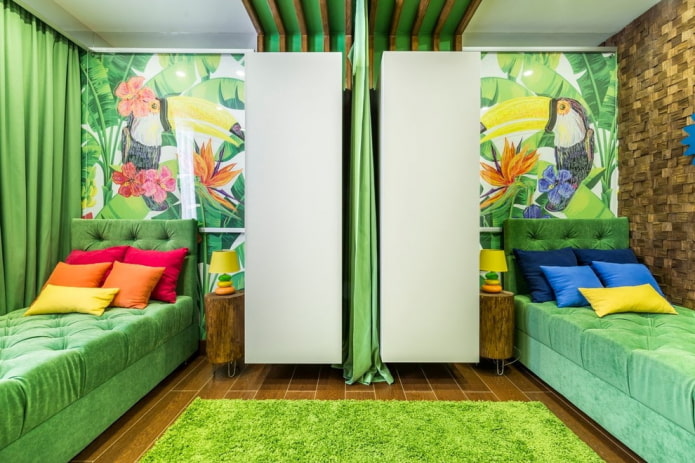
 10 practical tips for arranging a small kitchen in the country
10 practical tips for arranging a small kitchen in the country
 12 simple ideas for a small garden that will make it visually spacious
12 simple ideas for a small garden that will make it visually spacious

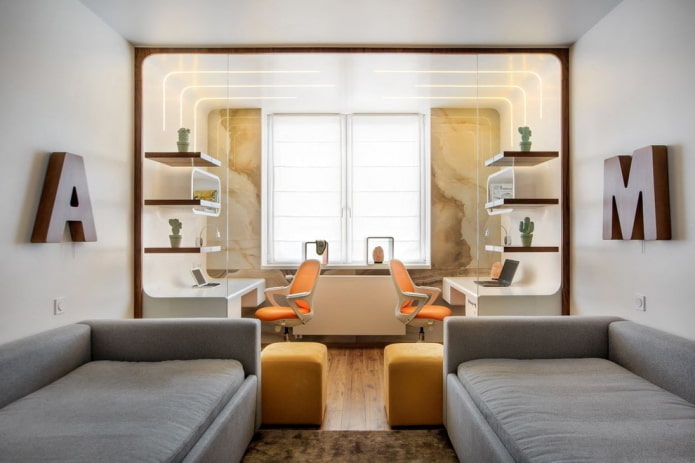
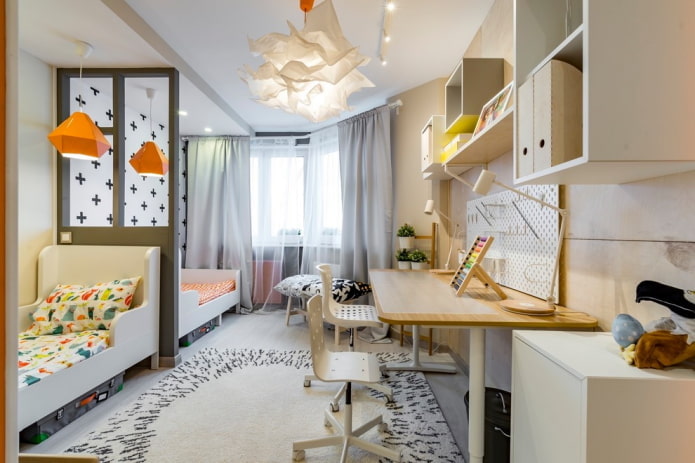

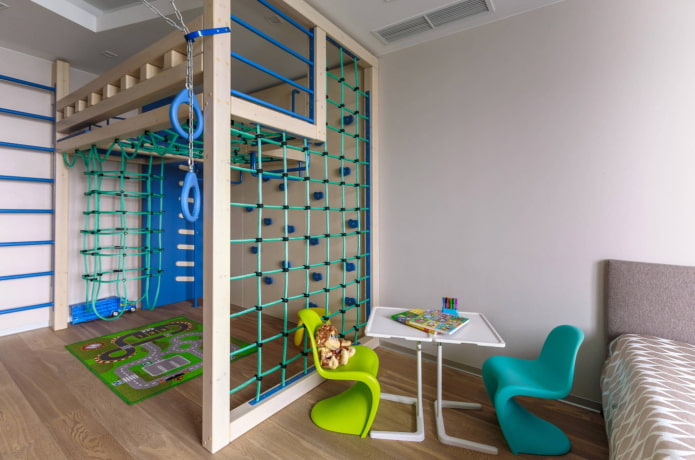
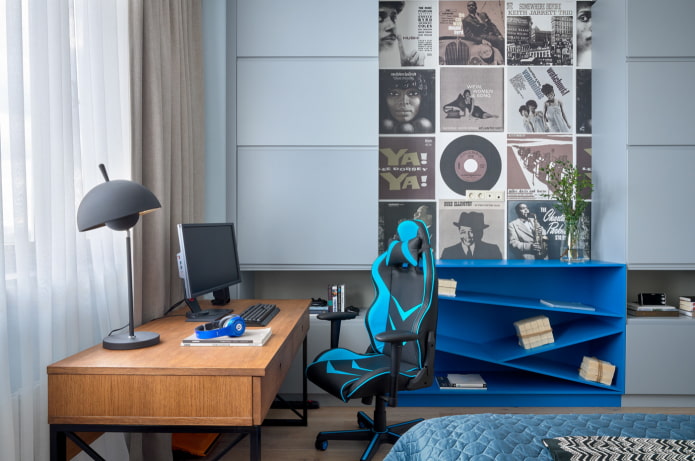
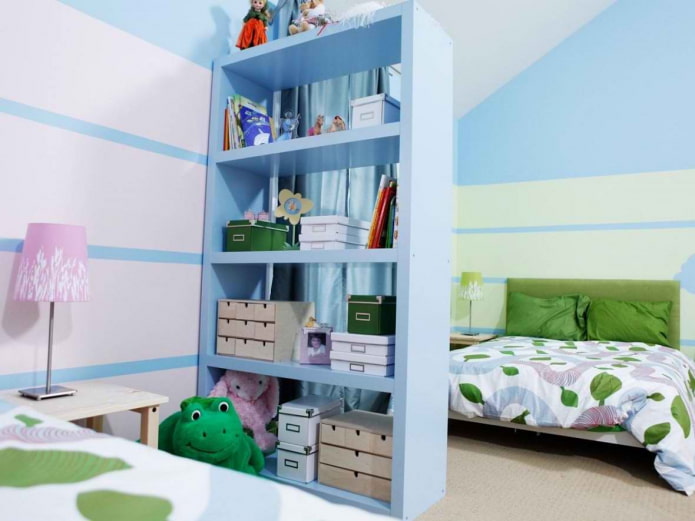
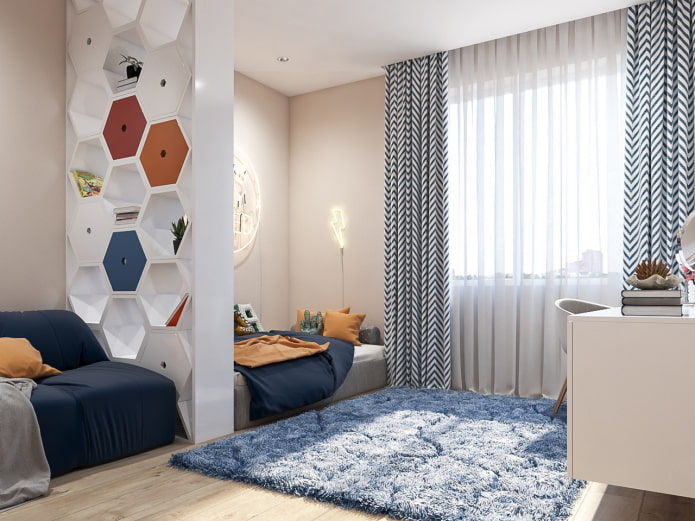
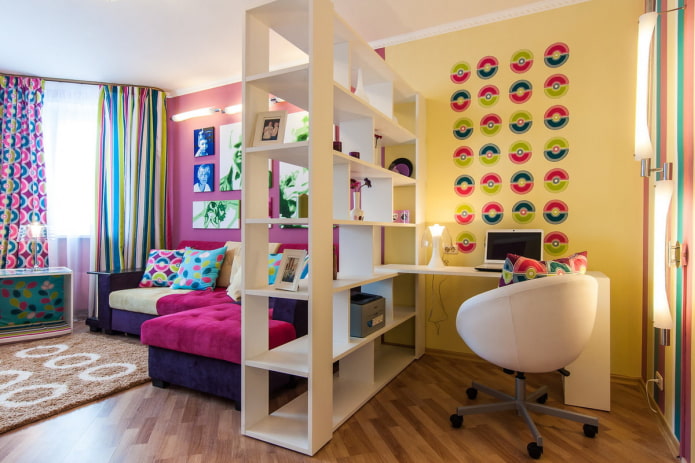
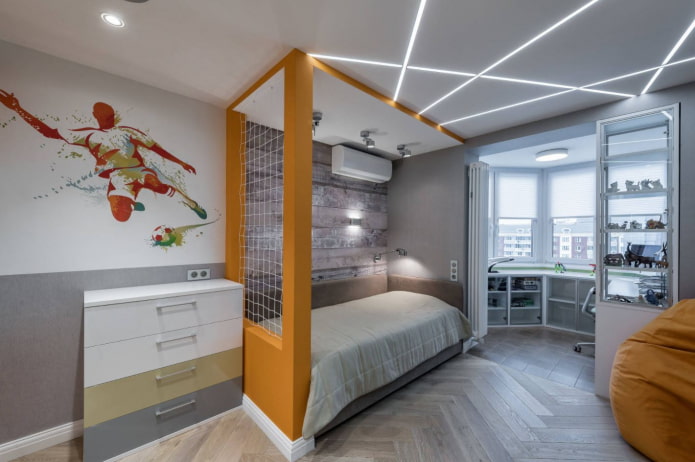
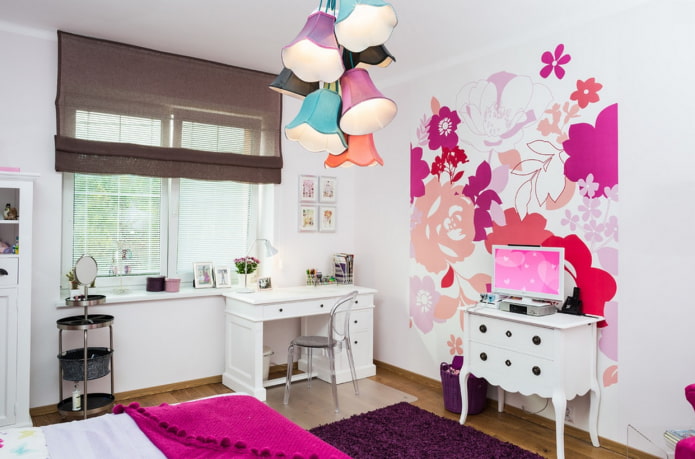
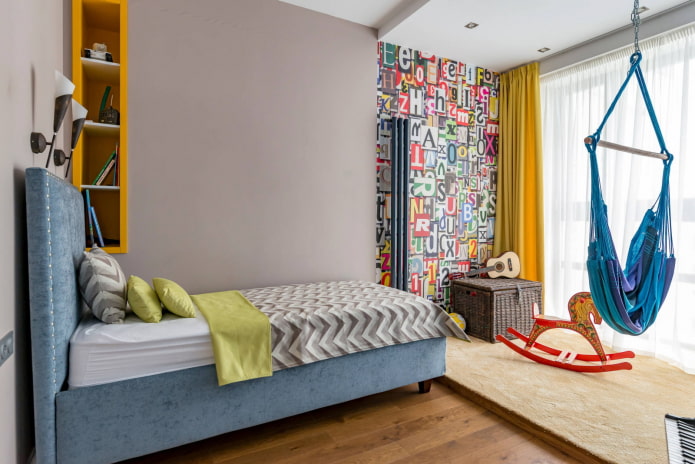
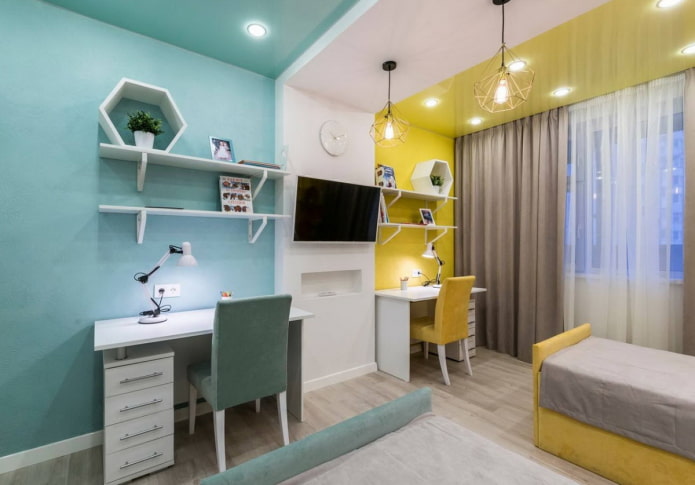
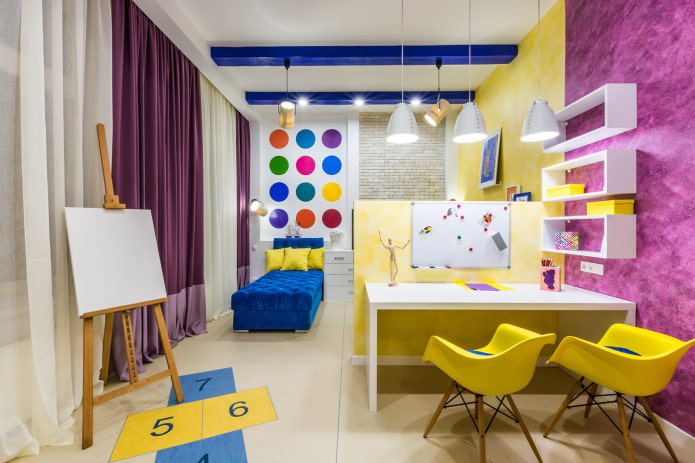
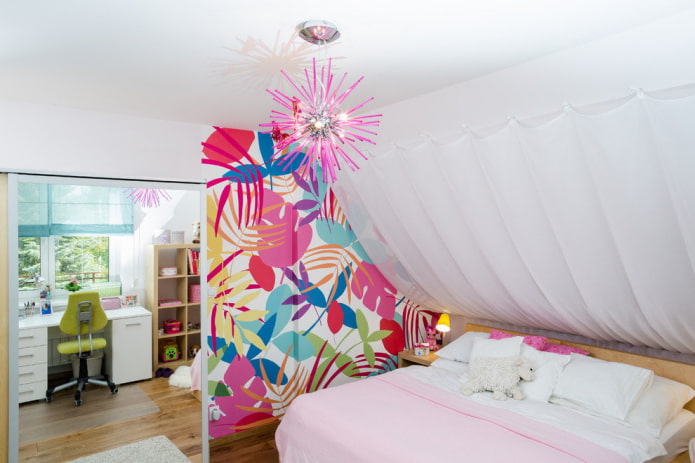
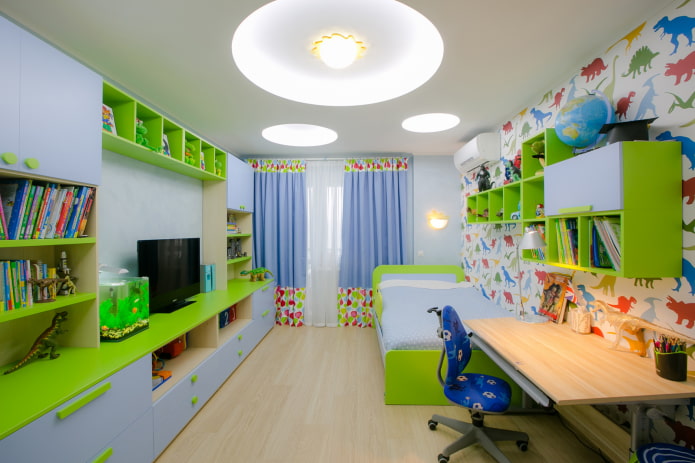
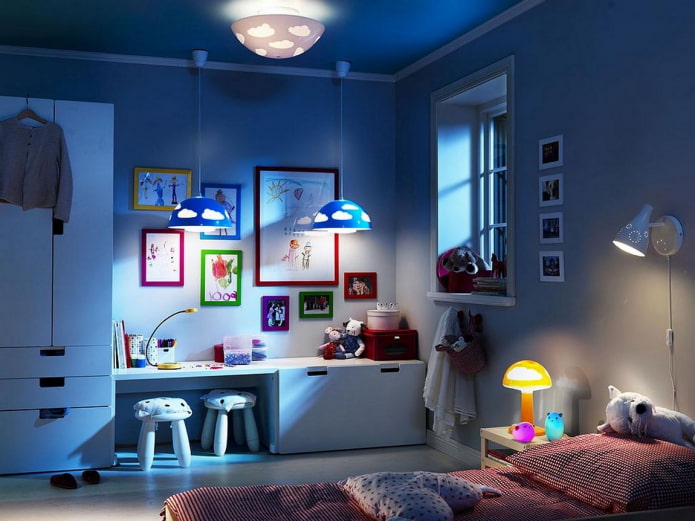
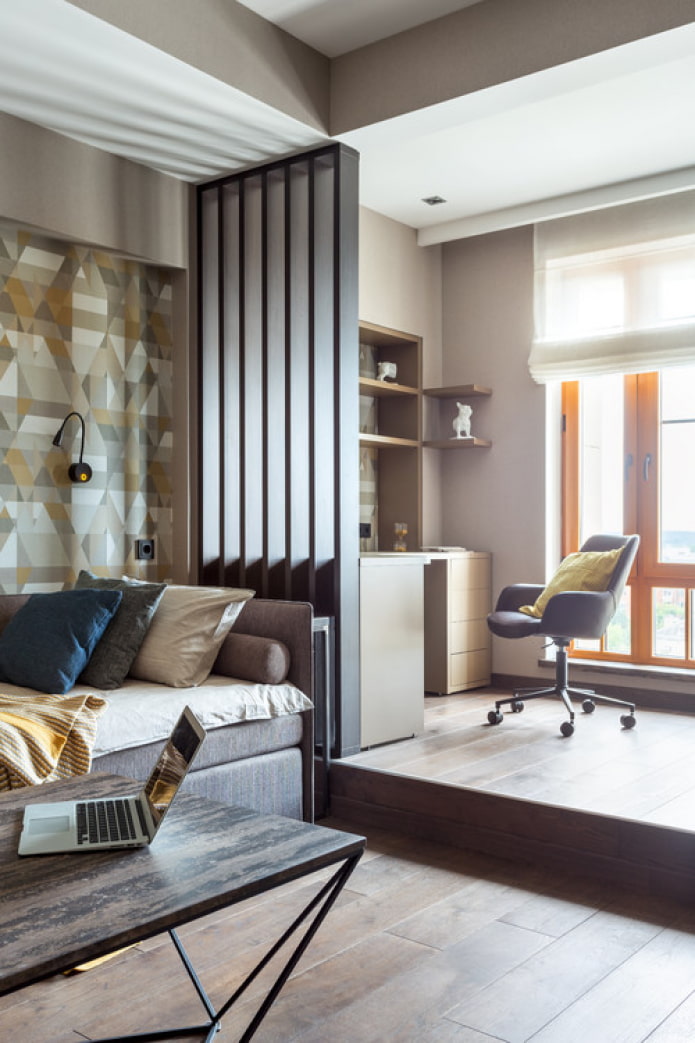
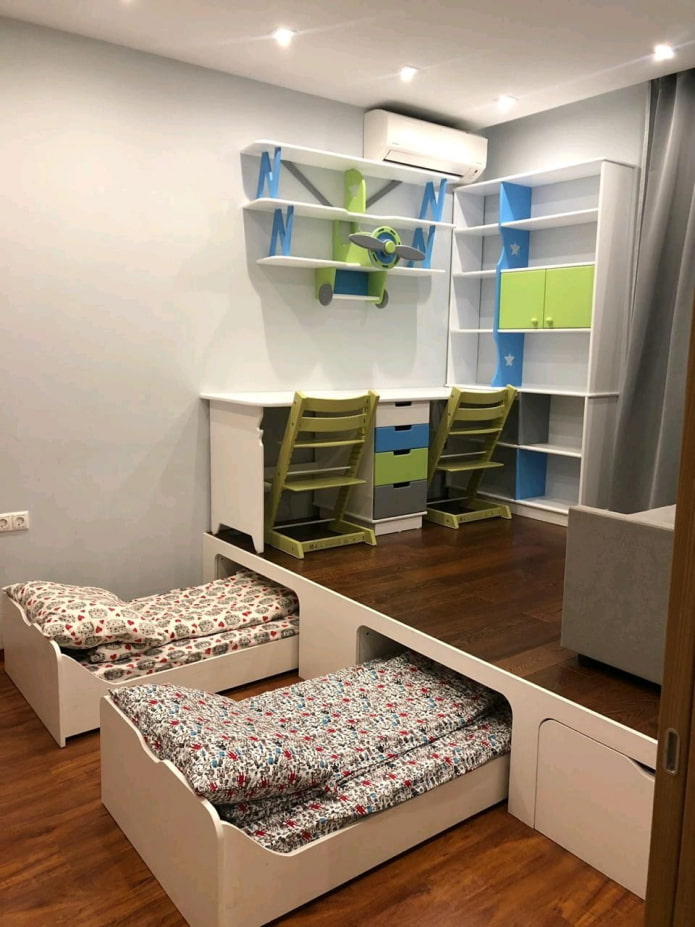
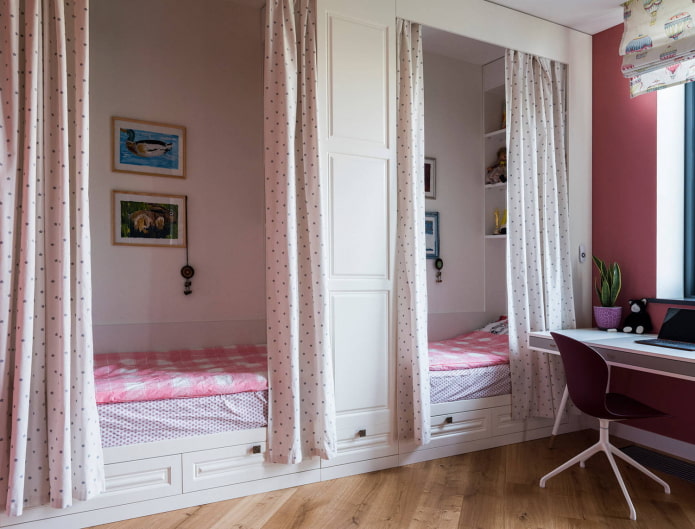

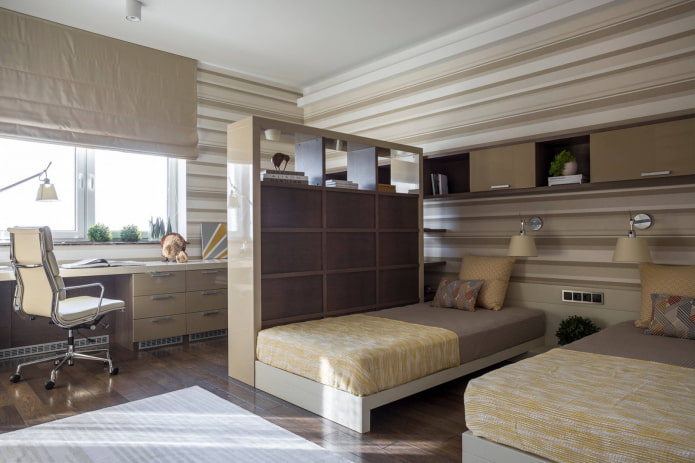
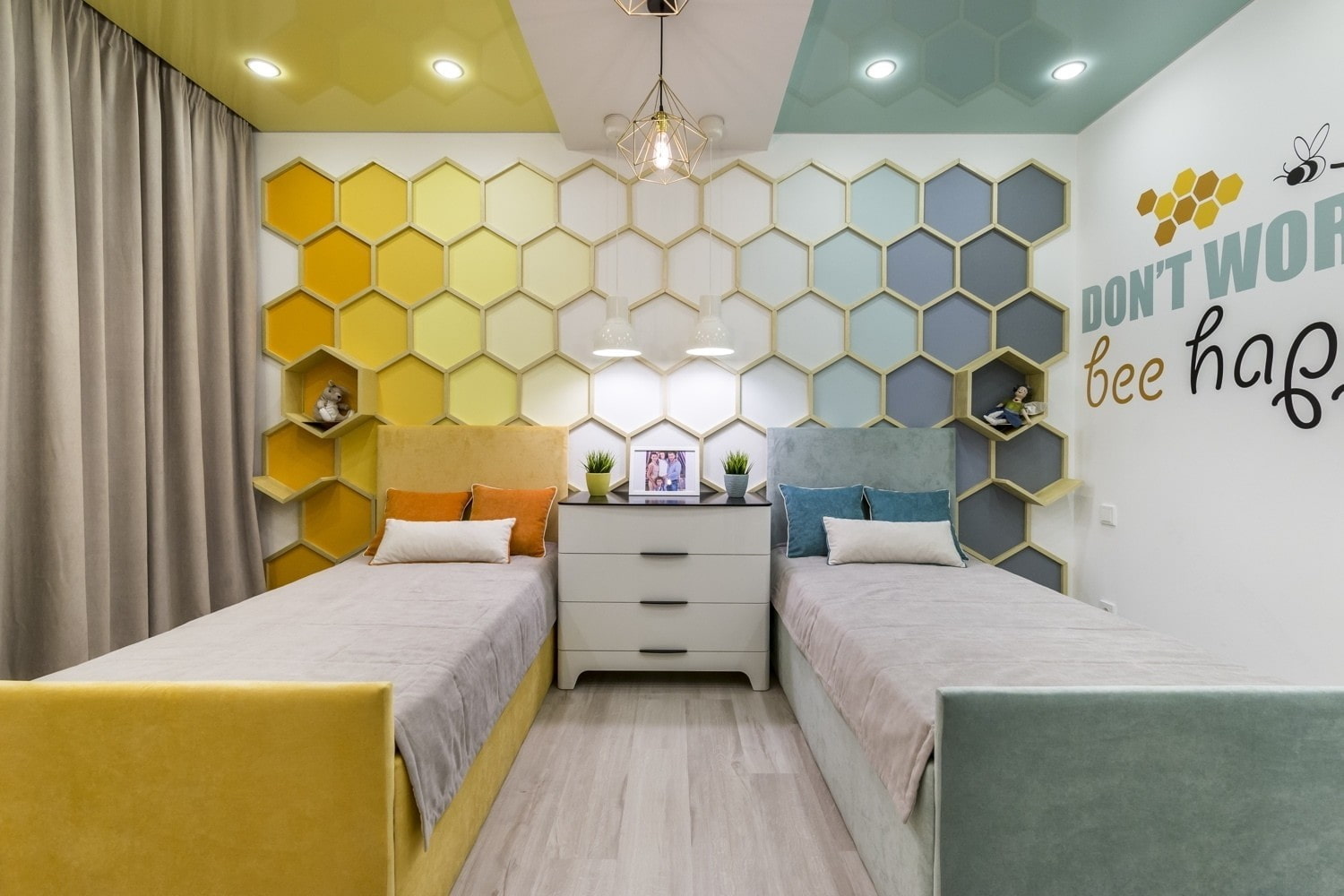
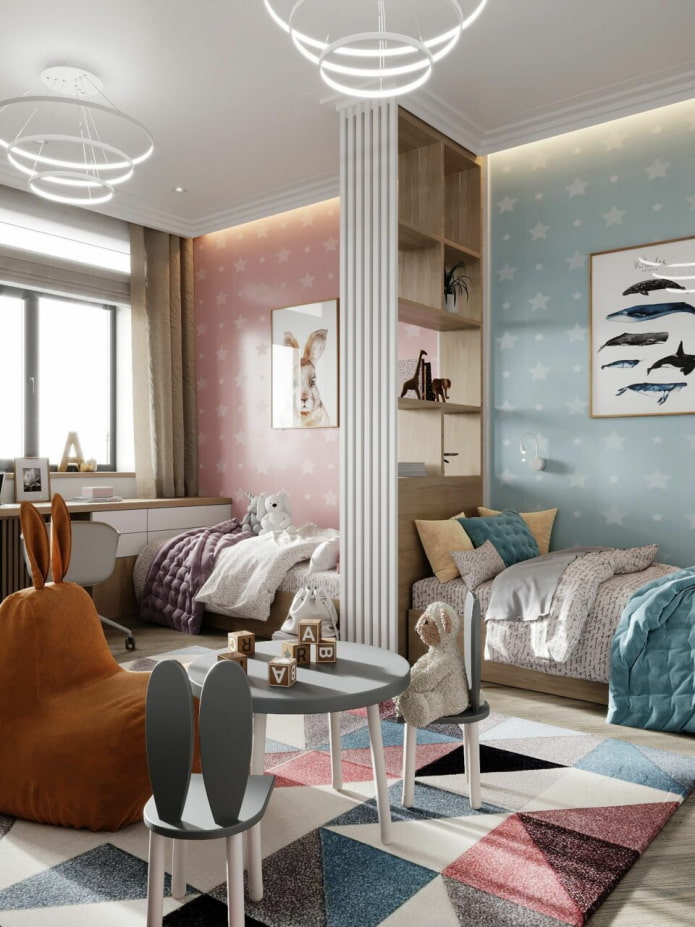

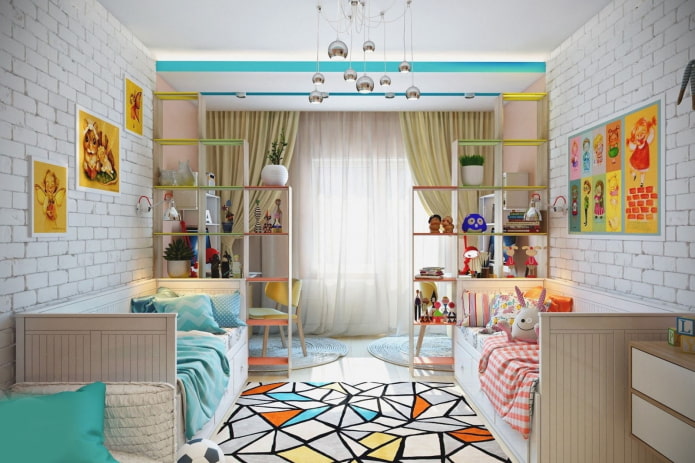
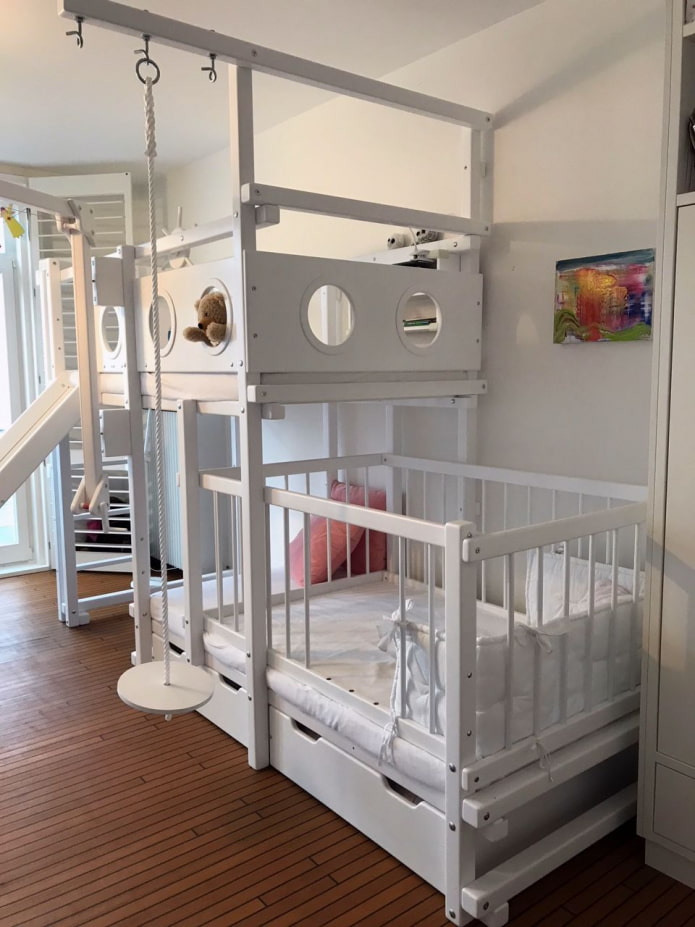


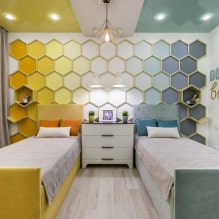
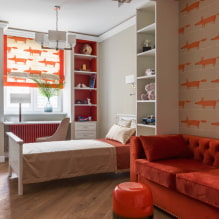
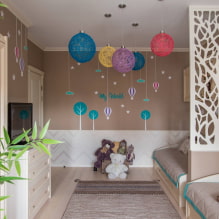
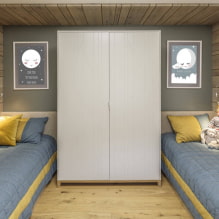
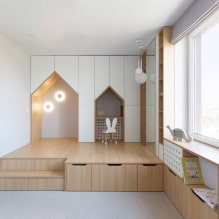
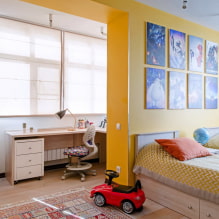
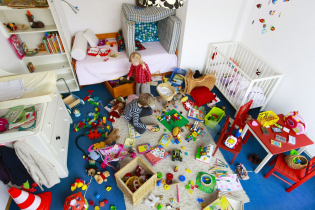 5 ways to turn your child's room clutter into a perfectionist's paradise
5 ways to turn your child's room clutter into a perfectionist's paradise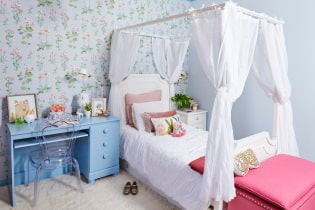 Design of a children's room for a girl
Design of a children's room for a girl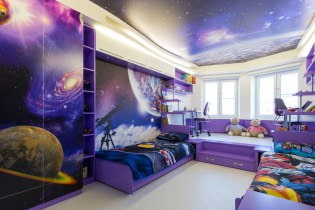 Stretch ceiling in the nursery: 60 best photos and ideas
Stretch ceiling in the nursery: 60 best photos and ideas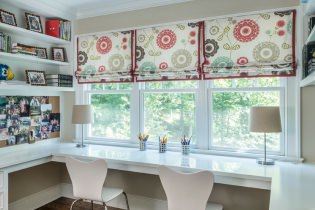 Curtains in the nursery: types, choice of color and style, 70 photos in the interior
Curtains in the nursery: types, choice of color and style, 70 photos in the interior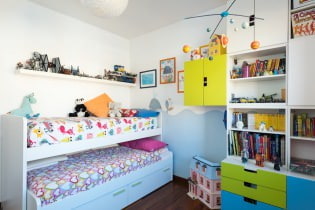 Interior of a small nursery: choice of color, style, decoration and furniture (70 photos)
Interior of a small nursery: choice of color, style, decoration and furniture (70 photos) Choosing wallpaper for a children's room: 77 modern photos and ideas
Choosing wallpaper for a children's room: 77 modern photos and ideas